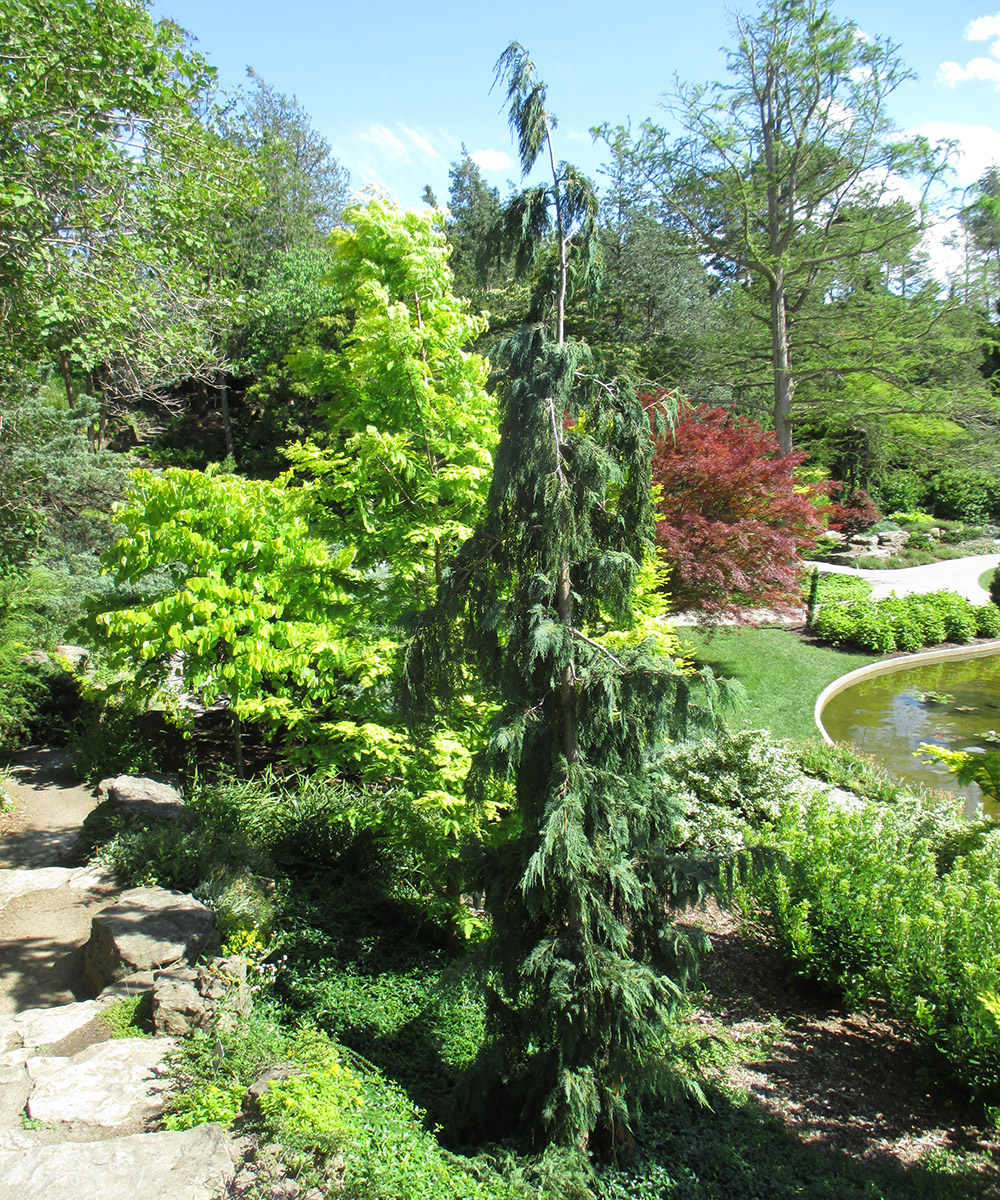
Conifers are so valuable in the Midwest landscape. Their beauty is certainly not hard to appreciate, with their wide range of textures, foliage colors, and forms. Because they add interest over multiple seasons, it’s important to maximize their impact, consider their placement, and accommodate their mature size and form. Conifers can be narrow, upright, prostrate, rounded, and weeping. I have a soft spot for weeping conifers, as they immediately become focal points in the garden with their interesting shapes. I selected the following weeping conifers for their impressive color, shape, and impact.

‘Green Arrow’ Alaska cedar
Chamaecyparis nootkatensis (syn. Xanthocyparis nootkatensis), Zones 4–7
‘Green Arrow’ Alaska cedar has a narrow form with drooping side branches and branchlets. I have a 20-year-old specimen on the side of my home that is 25 feet tall and only 4 feet wide. At mature height, it will reach 35 feet tall and 5 feet wide. While it has a strong upright and vertical form, the branching on ‘Green Arrow’ is droopy enough to really catch the eye by itself or as part of a composition with surrounding shrubbery. This species prefers moist, well-drained, and fertile soil. It will initially need staking and may occasionally continue to need some when young. I find this selection to be gracefully beautiful every day of the year. Full sun is desired in more northern areas of the Midwest, although some afternoon shading in warmer locations is warranted. The variety ‘Stricta’ is slightly wider with the same form as ‘Green Arrow’, while ‘Van den Akker’ is the narrowest selection of Alaska cedar to date.

‘Pendula’ weeping European larch
Larix decidua ‘Pendula’, Zones 2–8
In autumn, the golden fall coloration of larch (Larix spp. and cvs., Zones 2–8) needles catch our attention as these deciduous conifers lose them for the winter. ‘Pendula’ weeping European larch is a unique selection with promising potential as a solitary specimen in the garden. Positioned as a focal point or as part of a combination, the lime green needles are quite showy on the arching and mounding form of this strongly weeping plant. As with other larches, moist soil (particularly in summer) is preferred, as is full or partial sun. Many of these are grafted onto rootstock at a certain height to begin the process of weeping. The golden needles in fall are striking, albeit gone in a flash after reaching peak color. Consider placing this selection near a water feature, arched over a wall, or in a conspicuous spot outside a window. It will grow 12 feet tall and wide. The growth rate, in terms of height and width, is quite slow but can be easily encouraged or manipulated as desired.

‘Pendula’ weeping white pine
Pinus strobus ‘Pendula’, Zones 3–8
White pine (Pinus strobus, Zones 3–8) is a five-needled, soft-textured pine with a broad native distribution, often included in landscapes for size and texture. Mature white pines can be quite large and overbearing in a residential landscape, which might encourage the gardener to look for different forms. The standard weeping form ‘Pendula’ is a great option for the home landscape. No two plants of this cultivar look the same, and the form can also be manipulated with staking and additional training. ‘Pendula’ weeping white pine still requires the full sun and sharp drainage of the species and does not thrive in compacted soils, clay soils, or extremely alkaline conditions. This loosely branched, elegant selection might be staked for additional height and then gently guided and pruned as desired. ‘Pendula’ will fill out at a moderate rate and take many years to ultimately reach mature dimensions of 15 feet tall and 20 feet wide. Mature specimens are impressive but ultimately need significant garden real estate, although less than the species. The selection ‘Angel Falls’, which has denser branching than ‘Pendula’, is another weeping white pine to consider.
—Mark Dwyer, former director of horticulture at Rotary Botanical Gardens in Janesville, Wisconsin, operates Landscape Prescriptions by MD.


















Comments
Log in or create an account to post a comment.
Sign up Log in